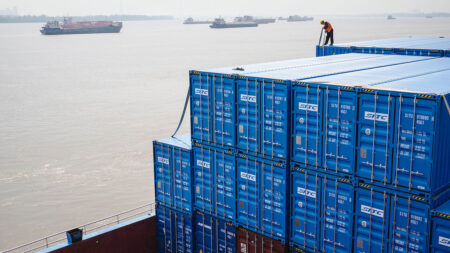A decade ago, finance ministries around the world were focused on a different priority – austerity. Governments were slashing budgets, even in the face of high unemployment rates and sluggish economic growth. However, the landscape has shifted dramatically since then. Today, most Western economies are on more stable footing. Unemployment has decreased, and corporate profits are on the rise. Despite these positive indicators, governments are now facing a new challenge – overspending.
The United States, in particular, stands out as one of the most prolific spenders. This year, the country is expected to run a budget deficit of over 7% of its GDP, a level typically only seen during times of recession or war. However, America is not alone in this trend. Countries like Estonia and Finland, known for their frugal fiscal policies, are also running significant budget deficits. Italy and France have also seen their deficits grow in recent years, prompting calls for a reevaluation of public spending.
In response to these concerning trends, Bruno Le Maire, France’s finance minister, recently issued a plea for a collective reassessment of government expenditure. It is clear that a new approach is needed to address the growing budget deficits that many countries are facing. The days of widespread austerity measures may be behind us, but governments must now find a way to balance their budgets and ensure long-term financial sustainability.
One of the key drivers of increased government spending in recent years has been the rising cost of social welfare programs. As populations age and healthcare costs continue to climb, governments are finding themselves under increasing pressure to provide essential services to their citizens. This has led to greater government expenditure, even in countries that have traditionally been more conservative in their fiscal policies.
In addition to social welfare programs, increased infrastructure spending has also contributed to the rise in government deficits. Many countries are investing heavily in infrastructure projects to stimulate economic growth and create jobs. While these investments are important for long-term prosperity, they can also put a strain on government finances in the short term.
Another factor contributing to the growing budget deficits is the lack of political will to make tough decisions. In many cases, governments are reluctant to cut spending or raise taxes for fear of upsetting voters. This has led to a cycle of increasing deficits and mounting debt, which could have serious long-term consequences for economic stability.
As governments grapple with these challenges, it is clear that a new approach is needed to ensure fiscal responsibility. This may involve a combination of spending cuts, tax increases, and structural reforms to address the underlying drivers of budget deficits. It will require political courage and a willingness to make difficult choices, but ultimately, it is essential to safeguard the long-term financial health of countries around the world.












